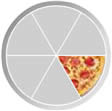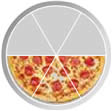Lesson 6:
Take 1 or 2 Game (two players).
In this game each person takes turns drawing one or two sticks, the last person drawing one or two sticks is the winner. We discussed what could be a bad number to end up with which would indicate that the other person will win the game.
Here are some thoughts:
Take Bad Numbers
1,2 3
6
9
1, 2, 3 4…
We observed the pattern to find the logic and saw multiples of three when taking 1 and 2 sticks. We made predictions. Also, we looked at the number bonds while playing.
It was easier to find out who the winner would be once we counted a smaller number of sticks. We look at the sticks and know exactly what number is without counting. It is called subitize.
Teachers have to differentiate the learning within the class. For example, we discussed that this activity is good for adding and counting numbers. However, if you have a high ability student in your class who already know how to do this, you need to challenge this student.
The teacher should ask him/herself the following questions:
1. What is that I want them to learn?
2. What if they cannot do the tasks (intervention)?
3. What if they already know it?
Also, we discussed probability. The numerical value to a chance happening. .. could be either low or high. According to Dr. Yeap this is not taught in the primary schools in Singapore.
Lesson 7:
Making Largest Even Number.
Dr. Yeap had 4 spinners (with numbers 0 to 9).
The goal was to make an
even number as big as possible. Dr. Yeap spun each spinner once and then we had to make a choice where to place the number in the empty boxes.
Dr. Yeap asked us that if we were using cards would it change our decision on where to place the numbers in the boxes.
One explanation was that if the number does not go back in the card stack it will never show up again. Hence, there may be a difference in our decision because of this knowledge.
Holiday Games in Primary One
We watched a video of Dr. Yeap teaching a primary one class. We were asked to assess the children in the following areas:
1. The skills needed for addition.
2. Can the students see a pattern?
3. Can the students communicate their ideas?
Dr. Yeap used two big dice, holding them together and asked the students to figure out which numbers are hidden.
The students were engaged and interested. This was like a magic trick for them. How could Dr. Yeap figure out the sum of the two numbers hidden on the dice when putting them together? They were problem solving, reasoning, communicating and connecting ideas.
One child actually communicated clearly that the die has six numbers and thus we can figure out what number is missing. Great job for a Primary One student!
One student tried to do the trick; by looking at all the sides that appeared he could find out the total sum of the two sides that were hidden. He said, “I think it is 8.” Let us see if there is a logical pattern to solve this problem.
Dice Total
1+6 7 =
3+5 6 =
2+5 7 =
4+2 8 =
5+4 5 =
Is there something special about the numbers on the opposite side of the hidden side? What happens when we add the three numbers? We then see that it all equals to 14.
The dice is usually a rounded cube, with each of its six faces showing a different number from one to six. The opposite numbers on the dice add up to seven.
This was an excellent lesson for young students to practice addition. The students were actively looking for a pattern which is one of the “Big Idea” when learning math. Another “Big Idea” is to develop strong number sense. They were practicing number bonds. It is important to understand simple addition. Teachers talk about “number bonds” as pairs which make up each number. For example, the number bonds for seven are 3+4, 2+5, 1+6 and 0+7.
Lesson 8:
Long division.
It was interesting to learn that the Singapore Math Curriculum is a spiral curriculum. It means that students revisit topics at a higher level. It is important that students have a good foundation in math in order to be successful. Again, they need to fully understand the concept and not rely on memorization!
Also, students need to understand how they arrive to a solution not because the teacher told them to follow a certain formula or procedure. For example, for long division…why do we do it in a certain way? Are there other ways we could use to solve the division?
When doing mathematics we need to understand the following:
1. Procedure.
2. Conceptual understanding (meaning behind…).
3. Instrumental understanding. For example, we know how to use a computer but if it breaks down we do not know what to do…
4. Conventional understanding. For example, the society has agreed on certain conventions that we have to follow.
We discussed that some conventions are contradicting depending on which country you live in. For example, in the U.S. they use a comma in 51,000 but in Singapore we do not.
Again, please remember that we are teaching children, not teaching mathematics. Mathematics is only a tool. Children need to learn by self-correcting. Teachers should be there to encourage children to make decisions and to use their thinking skills. At times adults try to teach young children multiplication by memorizing the multiplication table which is not developmentally appropriate. This will not encourage conceptual understand of mathematics.
The Singapore math curriculum follows the CPA Approach:
Concrete
Pictorial
Abstract
When teaching multiplication for young children, start by counting groups. For example, five groups of twos and so forth. It is helpful for the teacher to use a systematic arrangement of objects, in rows and columns, which is called an “array” or dot diagrams to help the children visualize the groupings.
It is crucial to teach children to figure out things for themselves. Do not teach them to be helpless. I agree!!!
It was interesting to discuss Howard Gardner’s multiple intelligences (linguistic intelligence, logical-mathematical intelligence, musical intelligence, bodily-kinesthetic intelligence, spatial intelligence, interpersonal intelligence, intrapersonal intelligence). Did you notice that there is no such thing as “memory intelligence?” This is not part of our brain structure to remember all these things…Hence, humans invented computers, thumb drives, etc. Invention comes out of necessity. Thank goodness for calculators and computers!!!
Intersting to know that the approach that is currently implemented in Singapore Schools:
TSLN (Thinking Schools Learning Nation) and subjects are vehicles.
TLLM (Teach Less Learn More).
The Singapore math has the fewest topics (thinnest syllabus) in the world. However, they go more in-depth. Could this be why Singaporean students score well on tests internationally?
We also discussed the importance of quality instruction. Children who have the opportunity with quality education teaching, do not need to spend hours doing tuition or be enrolled in extra commercial math programs. I agree!!!!
Lesson 9:
We were given the answer and should find the numbers in the subtraction question.
Three answers:
____ - _____ = 3 (10-7=3)
____ - _____ = 3 (12-9=3)
____ - _____ = 3 (11-8=3)
Five answers:
____ - _____ = 5 (10-5=5)
____ - _____ = 5 (11-6=5)
____ - _____ = 5 (12-7=5)
____ - _____ = 5 (13-8=5)
____ - _____ = 5 (14-9=5)
Can you see a pattern?
Lesson 10:
Word problem in response to a question raised.
John spent 1/4 of his money on a gift.
He spent 1/3 of the remainder on a book.
He was left with 36 dollars. How much money did John have at first?
This made me reflect about the advantages of breaking the word problem down to step 1, 2, 3 it is an easier and more failsafe approach.
So what constitutes mathematics?
Thinking Skills & Problem Solving
Number sense
Visualization
Generalization (patterns, relationship, connections)
Communication (language, representation, reasoning, justification)
Metacognition (thinking about thinking)
Thank you Dr. Yeap for another engaging and interesting math session!!!








